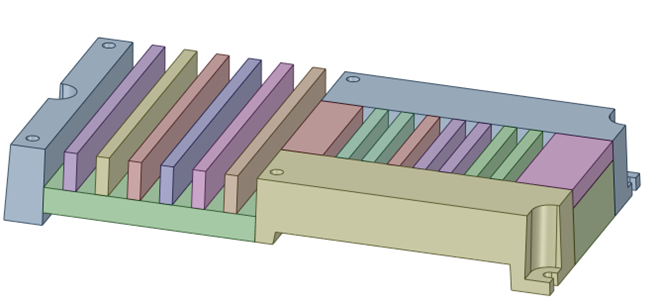


For descriptions of these options or to set their default values, click Options. See Assembly tool, Component tab.ĭepending on the selected file type, additional elements appear in the Open window. In manufacturing, a unit fitted together from manufactured parts. You can also insert into an existing design using the File tool in the Part group on the Assembly Hierarchy of components and subcomponents showing relationship within a design, as shown Select Open from the File menu or click in the Quick Access toolbar. If you import a file and it fails, the reason for the failure is reported in the Status Log on the lower right edge of the window. For example, if you export a design to an analysis company, and they tag geometry with load positions, boundary conditions, and so on, then when you re-import that design, make changes, and re-export to the analysis company, they will not need to recreate their tags on the new design. Object IDs are preserved when other files are opened or inserted into, and the IDs can also be exported. IDs for edges, faces, and bodies are now stored within the .scdoc file. 3D objects include vertices, edges, faces, surfaces, solids, layouts, planes, axes, and origins. Object Anything recognizable by the tools.

If you work frequently with non- Discovery SpaceClaim files, we recommend that you set your file options to optimize the importing and exporting process for your needs. Your license type determines which of these actions are supported. Use the Save As command to export parts, assemblies, drawing sheets, and 3D markups to formats read by other applications. Use the Open command to open files created in any supported format. Gain an in-depth understanding how to export PMBD files for transferring models to various ANSYS applications.You are here: File Operations > Importing and exporting

Understand how using minimal surface lattices will increase efficiency for additive manufacturing applications. Learn how new autoskin features will simplify the combination of analytic geometry with autoskinned patches during reverse engineering. Join us for this free webinar that explores Discovery SpaceClaim’s latest advancements and how you can apply them to create dynamic new products. Another major upgrade helps users export PMBD files, enabling model transfer to various ANSYS applications. Additionally, Discovery SpaceClaim integrates two new minimal surface lattices to help users create additive manufacturing parts while significantly improving default sizing when shrink wrapping. This will empower users to perform autoskin operations on open faceted bodies, simplifying the combination of analytic geometry with autoskinned patches during the reverse engineering process. ANSYS 2020 R1 introduces exciting new updates for ANSYS Discovery SpaceClaim.


 0 kommentar(er)
0 kommentar(er)
